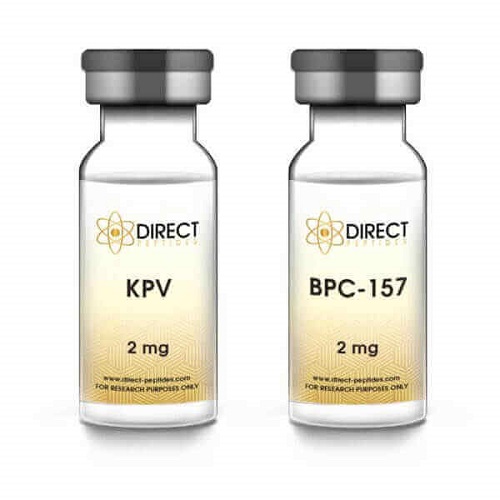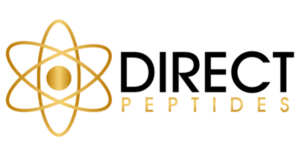
KPV peptide, a potent bioactive tripeptide, is gaining attention for its anti-inflammatory and healing properties. Frequently researched for its potential in treating conditions such as skin disorders and chronic inflammatory diseases, KPV could be a breakthrough in medical therapies aimed at reducing inflammation and promoting tissue repair.
At Direct Peptides, you'll find a variety of resources and insights into how this peptide is being utilized in medical and wellness circles.
What Is KPV?
KPV is a small molecule made up of three amino acids: lysine (K), proline (P), and valine (V). Known for its powerful anti-inflammatory effects, it can help to soothe inflammation and accelerate tissue repair. This makes it particularly relevant in treating conditions like inflammatory bowel disease (IBD) and other inflammation-driven disorders.
Research involving animal models of IBD has shown that KPV can significantly reduce intestinal inflammation and even restore the normal length of the colon, all without the typical side effects associated with traditional treatments. Ongoing studies continue to explore KPV’s mechanism of action and its therapeutic potential, with hopes of expanding its application to various complex medical conditions.
KPV's Mechanism of Action
KPV works by targeting key inflammatory pathways within the body. It reduces inflammation by blocking pro-inflammatory cytokines—molecules that trigger and sustain inflammation. Specifically, KPV interacts with the melanocortin-1 receptor (MC1R), which plays a crucial role in inflammation control and tissue regeneration.
By binding to MC1R, KPV suppresses inflammatory signals and minimizes tissue damage. This process not only reduces inflammation but also maintains immune function, making KPV an exciting option for treating conditions like IBD, where managing chronic inflammation is crucial.
If you are conducting research in this area, consider buying KPV peptide for research to explore its potential applications further. Researchers continue to delve into the peptide’s mechanisms to better understand how it can be used to address more complex medical challenges.
The Structure of KPV Peptide
-
Sequence: H-Lys-Pro-Val-OH
-
Molecular Formula: C16H30N4O4
-
Molecular Weight: 342.43 g/mol
-
PubChem CID: 125672
Research Benefits of KPV
Anti-Inflammatory Effects
KPV’s ability to mitigate inflammation spans across various systems, including the gastrointestinal tract, the central nervous system, vascular systems, and even joints. It has proven effective in reducing inflammation in conditions like IBD by inhibiting pro-inflammatory cytokines, which are often responsible for chronic inflammation.
Professor Didier Merlin’s research reveals that KPV interacts with the PepT1 transporter in intestinal and immune cells, inhibiting the NF-kappaB and MAP kinase pathways. This action reduces cytokine production, effectively managing inflammation. In mouse colitis models, KPV reduced inflammation and cytokine levels, leading to less colonic infiltration and a return to normal colon lengths, suggesting its potential as a treatment for IBD.
Wound Healing
KPV, like other alpha-MSH analogs, helps reduce inflammation in conditions such as dermatitis, arthritis, and gastrointestinal issues without causing pigmentation changes in the skin. Beyond reducing inflammation, it plays a key role in the healing process, targeting the inflammatory, proliferative, and remodeling phases of tissue recovery. Research also points to its antimicrobial properties, notably its ability to combat Candida albicans and Staphylococcus aureus, making it particularly useful in preventing infections in severe wounds like burns.
Skin Health
KPV’s anti-inflammatory and immune-boosting properties make it effective in treating inflammatory skin conditions. Studies have shown its ability to reduce skin inflammation, treat eczema and contact dermatitis, and regulate interleukin-10 production to prevent skin irritation. Additionally, it suppresses pro-inflammatory molecules like ICAM-1, reinforcing its potential in improving overall skin health.
Immune Function
KPV’s therapeutic applications extend beyond inflammation. The peptide has been shown to enhance antimicrobial activity, reduce fever, and stimulate regulatory T cells, which are key players in immune response regulation. Research highlights KPV’s effectiveness in reducing inflammation in conditions such as arthritis, autoimmune eye diseases, and acute pancreatitis.
Scar Formation
In the context of wound healing, KPV helps reduce chronic inflammation, a key contributor to hypertrophic scars like keloids. By minimizing the inflammatory response and macrophage infiltration, KPV prevents the formation of larger scars, thus improving the overall healing process. It also has the potential to enhance the efficacy of chemotherapy treatments by minimizing scarring, allowing for higher doses of these treatments to be used.
Nerve Regeneration
As part of its broader healing role, KPV also shows promise in nerve regeneration. It has been found to promote nerve growth, protect against neurotoxicity, and help repair damage to neural tissue. In studies involving neonatal rats, spinal cord injuries, and cultured brain cells, KPV demonstrated its ability to foster nerve repair and improve function following injury.
Stroke and Neuroprotective Effects
Both KPV and its precursor peptide, alpha-MSH, share similar therapeutic properties, showing promise in the treatment of stroke. Research suggests that KPV can help improve recovery outcomes by reducing inflammation in brain arteries, lowering pro-inflammatory cytokines, and minimizing damage caused by strokes. Additionally, KPV’s antioxidant properties may aid in protecting against neurodegenerative diseases by preventing oxidative stress and reducing neural damage.
KPV Peptide Nasal Stack With BPC-157
For researchers exploring KPV’s combined effects with other peptides, the KPV peptide nasal stack with BPC-157 provides an innovative delivery method. Available in two sizes (15 ml or 30 ml), this combination allows for the convenient study of both peptides’ anti-inflammatory and regenerative properties. The nasal spray format ensures rapid absorption, facilitating more effective research on their synergistic benefits.
KPV Peptide Pre-Mixed Pen
For those in research settings, the KPV peptide pre-mixed pen offers a hassle-free, accurate solution. Available in 2 mg doses, this pre-mixed solution eliminates the need for manual mixing, ensuring consistent and reliable administration. Ideal for exploring KPV’s anti-inflammatory, antioxidant, and neuroprotective effects, the pre-mixed pen simplifies dosing and enhances precision in experimental setups.
Pre-Mixed Cartridge Kits
Available in packs of one, two, or three, these kits include a cartridge pre-mixed with KPV peptide and bacteriostatic water, along with a peptide pen and needle tips. With a 10% discount on three-cartridge packs, these kits provide a convenient, reliable method for those studying KPV’s diverse therapeutic potential.
Back to Homepage
In conclusion
KPV peptide holds promise as a versatile tool in both medical research and potential therapeutic treatments. Whether addressing inflammation, promoting healing, or enhancing immune function, its broad range of applications could offer groundbreaking solutions to many chronic and acute conditions.
